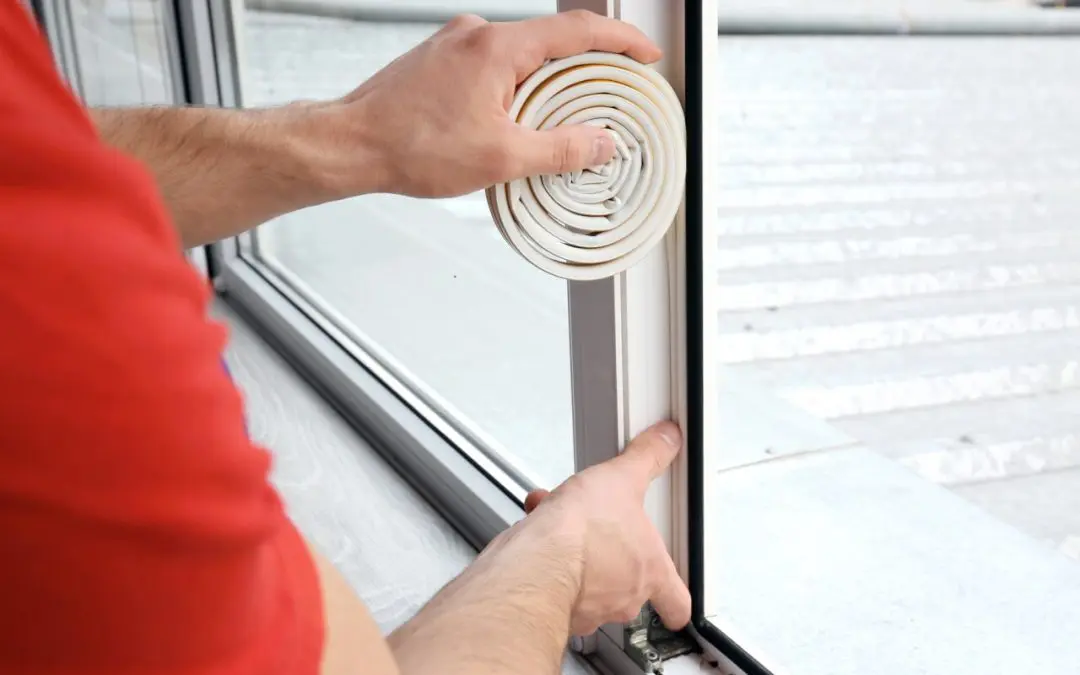Drafty windows are more than a minor annoyance—they impact your home’s energy efficiency, leading to increased heating or cooling bills and reduced comfort. Be it a cold breeze in the winter or excessive heat during the summer, fixing drafty windows is essential. The good news? There are several ways to tackle this common home issue without replacing the entire window. This guide will walk you through practical methods to fix drafty windows, enhance insulation, and improve your home’s comfort.
Identifying the Source of the Draft Before You Fix Drafty Windows
Before jumping into the repairs, it’s crucial to understand where the drafts are coming from. The most common culprits include gaps around the window frames, worn-out weatherstripping, cracked caulking, or even damaged glass panes.
To identify the source, close all windows and doors and move your hand around the window frame. If you feel cold air, you’ve located the draft. Another method is to light a candle or stick of incense and slowly move it around the edges of the window. If the flame flickers or smoke is disturbed, you’ve found the source of the leak.
Recaulking the Window Frames
Caulk around window frames can dry out or crack over time, creating small gaps that allow air to seep in. Recaulking is a simple yet effective solution to seal these gaps.
First, remove any old, dried caulk with a putty knife or caulk remover. Make sure the surface is clean and dry before applying new caulk. Opt for a high-quality, exterior-grade caulk that can withstand temperature fluctuations. Apply a smooth, even bead of caulk around the entire window frame, making sure to fill gaps completely. After application, smooth the caulk with a caulking tool or your finger for a clean finish. Allow the caulk to dry fully before testing the window for drafts.
Replacing Worn-Out Weatherstripping to Fix Drafty Windows
Weatherstripping is designed to seal the gap between the window sash and frame, but over time, it can wear out or become damaged, leading to drafts. Replacing the weatherstripping can significantly improve your window’s insulation.
Start by removing the old weatherstripping. Depending on the type used, this could involve peeling it away or unscrewing small fasteners. Clean the area to get a smooth surface for the new material. You can choose from various types of weatherstripping, including foam tape, V-strip, or rubber seals, depending on the type of window you have. Measure and cut the new weatherstripping to size, then apply it along the window’s edges, pressing firmly to ensure a good seal. Once replaced, test the window to confirm the draft has been eliminated.
Adding Insulating Film
If you’re looking for a temporary fix during colder months, applying window insulation film is an excellent option. This plastic film adheres to the window and provides an extra layer of insulation, reducing heat loss.
To install the film, clean the window and the surrounding frame to ensure good adhesion. Cut the film to size, allowing extra material to overlap the window edges. Using double-sided tape, attach the film to the window frame. After applying the film, use a hair dryer to shrink it and create a tight seal. This method is ideal for homes with older windows, offering a quick and affordable solution to block drafts.
Sealing Gaps with Foam Insulation
In some cases, drafts may be caused by larger gaps between the window frame and the wall. These gaps can be sealed using spray foam insulation, which expands to fill the space and provide an airtight barrier.
To start, carefully remove trim or casing around the window to expose the gap between the frame and the wall. Shake the spray foam canister well and insert the nozzle into the gap. Slowly apply the foam, as it will expand considerably once it’s sprayed. Allow the foam to dry completely before trimming away any excess. Once the foam has hardened, replace the trim or casing, and your window will be much better insulated.
Installing Thermal Curtains or Draft Stoppers
If you’ve tried the above methods and still feel some drafts, add thermal curtains or draft stoppers for added insulation. Thermal curtains are designed to trap warm air inside during winter and block excessive heat during summer. Choose thick, insulated curtains that cover the entire window for the best results.
Draft stoppers, also known as draft snakes, can be placed along the window sill to block cold air from entering through the bottom of the window. While these solutions won’t seal the window itself, they provide an extra layer of defense against drafts and make your home feel warmer.
Replacing Damaged or Single-Pane Glass
If you live in an older home with single-pane windows or your window glass is damaged, upgrading to double-pane or insulated glass will make a significant difference. Double-pane windows are designed with a layer of gas between the glass, which acts as insulation, reducing heat transfer.
While replacing the entire window might be more costly than other repair methods, it’s a long-term investment in your home’s energy efficiency. Double-pane windows block drafts and improve your home’s overall insulation, reducing energy costs and enhancing comfort year-round.
When to Consider Window Replacement
If your windows are older, severely damaged, or beyond simple repairs, it may be time to consider full window replacement. While this is a more expensive option, replacing old windows with energy-efficient models can dramatically improve your home’s insulation, reduce drafts, and lower heating and cooling bills.
Look for windows with the ENERGY STAR® rating, as these models are designed to meet stringent energy efficiency standards. New windows will seal out drafts and enhance your home’s aesthetics and potentially increase its value.
Fixing drafty windows is essential for maintaining a comfortable, energy-efficient home. For older or more damaged windows, upgrade to double-pane glass or invest in energy-efficient replacements for long-term comfort and savings. By addressing drafts early on, you’ll create a cozier living space and enjoy lower energy costs year-round.
FAQs on How to Fix Drafty Windows
Can weather conditions affect how drafty my windows feel?
Yes, extreme weather conditions can intensify the effects of drafty windows. In colder climates, windows may feel significantly draftier due to temperature differences between the inside and outside. Humidity also causes wooden window frames to expand or contract, worsening drafts over time.
Can drafty windows cause condensation or mold?
Yes, drafty windows lead to moisture buildup inside your home, especially in colder months. When warm indoor air meets cold air from a drafty window, condensation forms on the glass, encouraging mold growth around the window frame.
Are drafty windows only a problem in winter?
No, drafty windows can be an issue year-round. In the summer, cool air from your air conditioning can escape through the same gaps, making your system work harder to maintain a comfortable temperature and increasing energy costs.
Can insulating blinds or shades help with drafty windows?
Yes, using insulating blinds or cellular shades provides an additional barrier against drafts. These window treatments trap air between the window and the room, reducing the amount of hot or cold air that enters through the window.
Veterans First Home Inspections offers professional inspections for homebuyers and sellers in the Washington, DC, area. Contact us to request our services.

